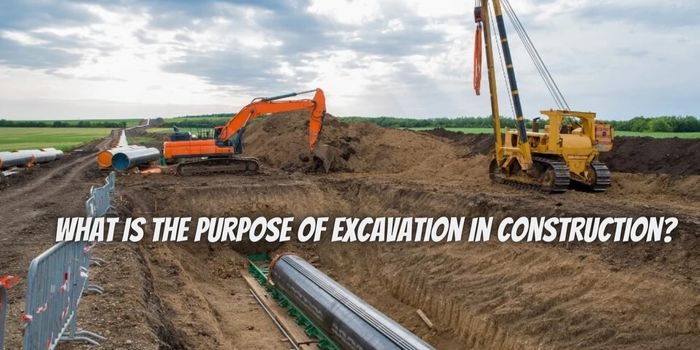Excavation, to many people, simply involves digging a hole. However, it’s often much more complicated. An excavation contractor has to assess the job to be done and determine the best equipment – sometimes debating Bobcat vs Excavator – what are the differences. They also plan the task accurately for the desired success.
It’s important to note that moving and removing soil and rock can also be dangerous to the health and environment when not done right. So, the excavation contractor has to consider the best way to go about the project, and this may often include tasks like trenching, drilling, and grading to achieve desired results.
If you’re wondering more about excavation, find all the answers in this article.
What’s the Purpose of Excavation?
Excavation in construction helps prepare the land or earth for construction activities. The land preparation process often involves removing the earth, rocks, and other materials to create a level, stable, and useful construction surface upon which a desired structure will be erected.
Excavation is one of the most crucial steps in pre-construction because it sets the foundation upon which the rest of the project is built. If the excavation isn’t done right, chances are high that there may be future structural, stability, water, or related problems that may cost a lot more to repair.
Types of Excavation
Excavation services are grouped into types based on factors like;
- The type of excavated material
- The purpose of the excavation
Based on the Type of Excavated Material
Based on the type of excavated material, below are the types of excavation:
Topsoil Excavations: This involves removing topsoil or the topmost layer of the earth’s surface. This process often focuses on debris or vegetation removal.
Earth Excavations: This goes a layer deeper than topsoil excavation. It is ideal for most construction or land improvement projects, including landscaping. It is also used for backfill.
Rock Excavations: This focuses on removing hard or rocky materials that are not easily removed by manual tools. This process may often involve rock-blasting machinery or explosives.
Muck Excavations: This removes the topsoil and water, especially from waterlogged or flooded areas. It can also be called hydro-excavation.
Unclassified excavations: This involves the removal of a combination of materials from the earth.
Based on the Purpose of Excavation
Below are the excavation classifications based on purpose.
Cut and Fill or Stripping Excavations: This type of excavation is used in building construction or as preparatory steps for structural developments. The cut-and-fill method is deployed when a construction lot is not leveled and requires grading.
Trench or Footing Excavations: This is best applied for foundation purposes. It can also be used for burying or installation purposes. It can be deployed for installing waterlines, fiber cables, and more. The trenching is often deeper, allowing for deeply embedded installations within the earth.
Basement Excavations: Professionals commonly use this method to construct basements, underground bunkers, or other sub-earth structures.
Road Excavations: This type of excavation focuses on grading and creating a smooth surface for road construction.
Bridge Excavations: This is focused on creating a solid stand that supports hundreds of thousands of weights during bridge construction.
Over Excavations: This is perfect for excavation works that require deeper trenches to be dug.
Dredging: This is used to remove various sediments and debris found inside water or below water level.
What to do Before Excavation Starts
It’s important to lay a solid foundation for your excavation project before it’s started. This is because the process can be dangerous and hazardous. Consider these tips to get the best outcome;
- Contact a professional, experienced, and reputable excavation contractor or company
- Determine the soil type and soil profile
- Inspect the area for connecting buildings, structures, and underlying utility network
- Obtain the required permits to have excavation done
- Discuss the project timeline while remaining reasonable to accommodate uncertainties.
- Secure emergency contacts in the event of accidents or damages
- Deploy barriers to curb access to the worksite or area.
How Does the Excavation Process Work?
The excavation process must be detailed and planned around the expected goal. It is important to hire the right professional for the job based on their experience and the available equipment.
To get the best out of your excavation. Below are the processes involved.
- Planning and setting out corner benchmarks.
- Surveying the area to be worked on. This includes recording the ground and top levels.
- Excavation to the approved depth. This can also mean grading to ensure a leveled plain.
- Dressing the loose, excavated soil.
- Filling areas up to the cut level using the excavated or loose soil.
- Boundary development for further construction exercises.
It’s vital to understand the purpose of excavation in construction. However, you don’t have to do it yourself. Your building contractors can take care of everything since they are trained and equipped for it.
